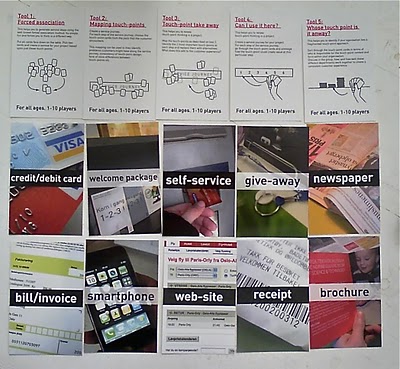Touch-point cards now available
Written by Simon Clatworthy
Quite a lot of people have liked the touch-point cards and have been spreading the word about how useful they are in service innovation projects. I have received several emails requesting sets, but have been unable to deliver. The first two print runs of the cards went very quickly. Now, I’m pleased to say that we have just received a third set of cards.
The third set includes some new cards and now all cards are together. For version two, we added new cards, but had to take a few old ones out out to make space for the new ones in the existing box. We have now increased the size of the box to make them all fit in. This makes version three the most up-to-date, including all cards produced so far. To really confuse everyone, there is no visible sign of version numbers on the cards or the boxes. But, they are still free, and a gift from the wonderfully kind Oslo School of Architecture and Design (AHO). If you have version two, you probably won’t notice the difference.
If you would like a set, please send me a mail at simon (dot) clatworthy (at) aho (dot) no, including a full post address, and we will send them off to you.  I ask one favour in return: give me some feedback regarding your reflections on their use. The development of the cards was (and still is) a part of research work, and I am trying to understand how they are used, what works and does not work etc. I am really interested to find out what people think of them. In particular,  if people experience that they can constrain idea generation. This is something that people mention as a danger, but not one that I have experienced myself. The argument is that by showing a finite group of  touch-points, that new touch-points will not be considered. It makes sense, but I keep finding that innovation in services occurs not so much from the invention of totally new touch-points, but from the use of existing touch-points in new contexts (or the coordination of touch-points). For example online share trading revolutionized ownership of stocks, but that came from using an existing touch-point (internet) in a way that was new to the service (trading of stocks). Of course, if you are Apple, then inventing new touch-points is part of your business model, and the cards would only have limited use. For most service providers, existing platforms are more than enough.
If you are totally confused about what I am talking about, and have missed out on the touch-point interest, then take a look at this article (link) in the International Journal of Design. It explains their development and use, in a researchy language. In terms of a short sharp business language – Â they just work.
